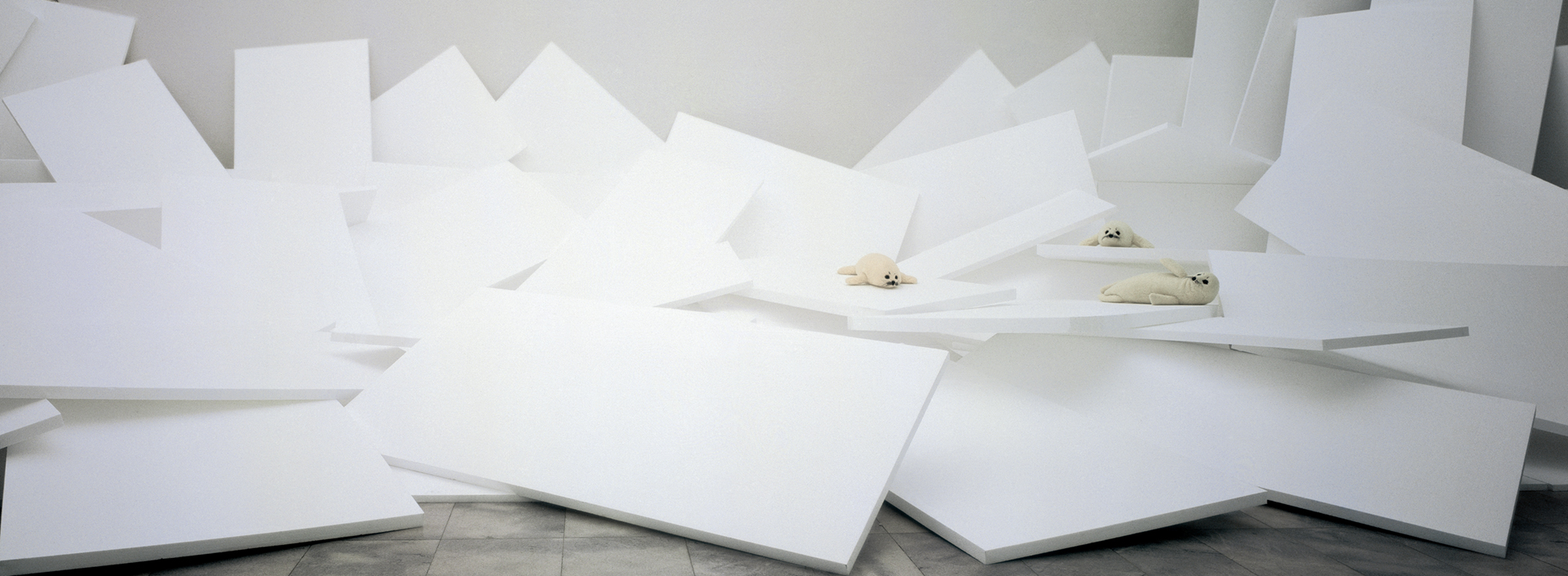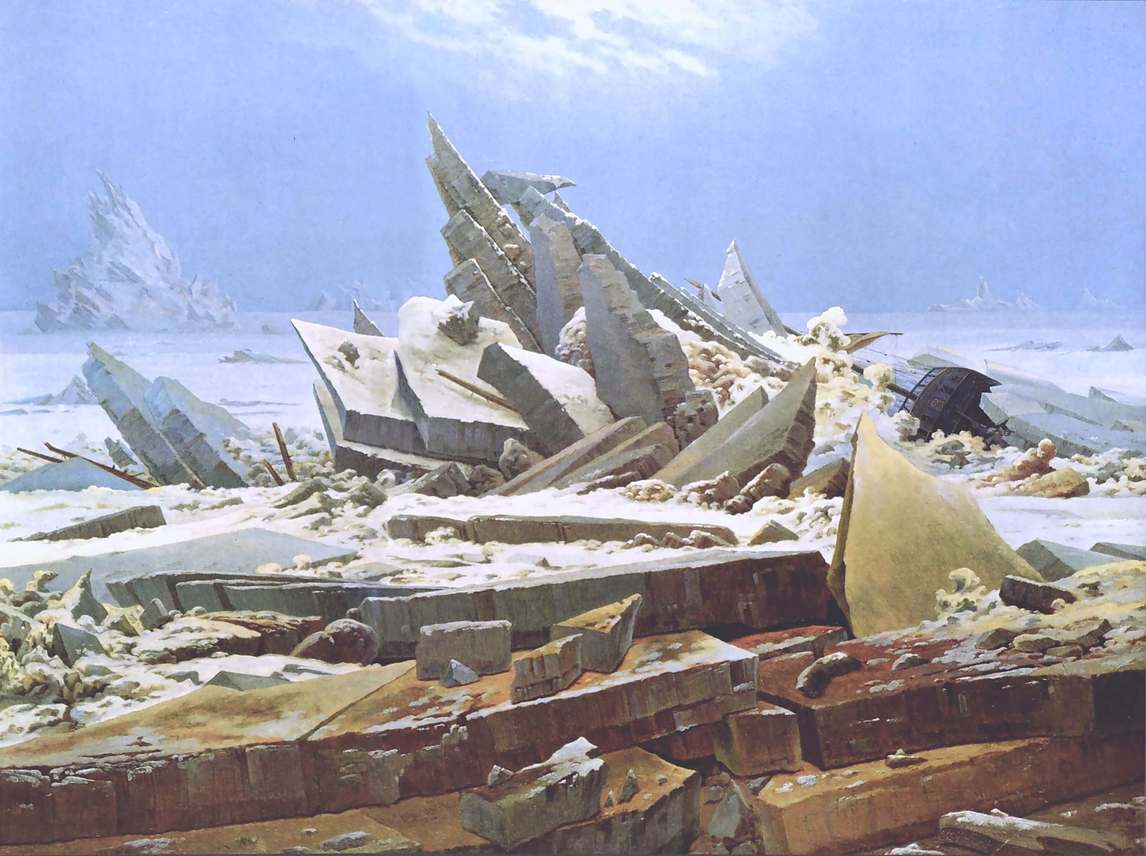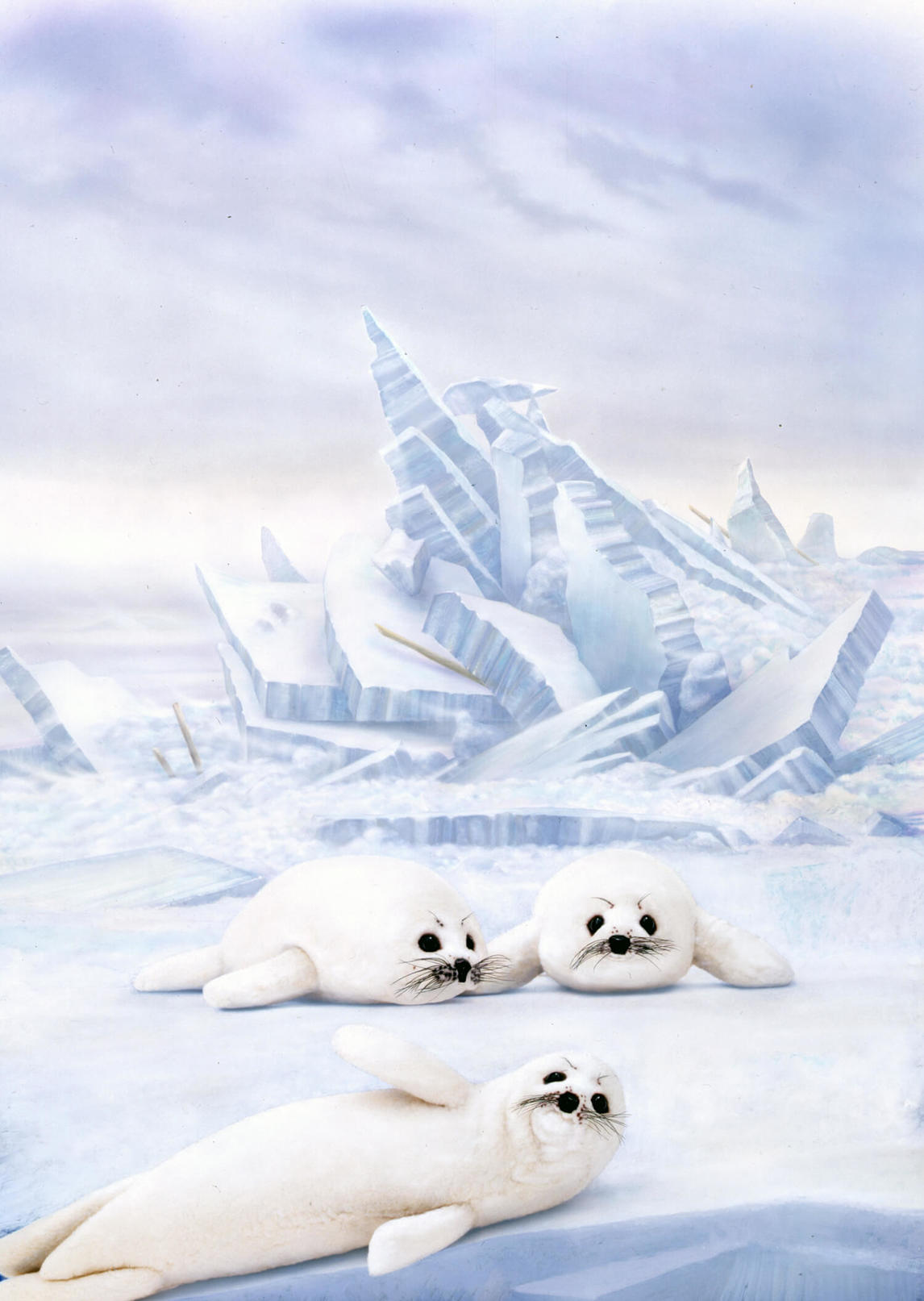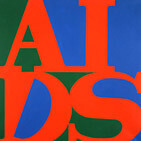Fin de siècle 1990

General Idea, Fin de siècle, 1990
Installation of expanded polystyrene with three stuffed faux seal pups (acrylic, glass, and straw), dimensions variable
Private collection, Turin
The installation Fin de siècle represents General Idea’s poignant commentary on those struck by the AIDS pandemic. This deeply charged work is also one of the last self-portraits the trio created in their twenty-five-year collaboration. The work was featured in the group’s 1992–93 touring exhibition of the same name.


The large-scale piece comprises a minimum of three hundred 120 by 240 centimetre sheets of Styrofoam that fill a room, creating the impression of a large field of breaking ice. Located within the landscape are three charming, artificial harp seal pups. This installation makes reference to a historic Romantic landscape painting of a shipwreck: The Wreck of the Hope, 1823–24, also known as The Arctic Sea, by German artist Caspar David Friedrich (1774–1840). The artists drew on the aesthetic of this painting, recreating its forbidding Arctic Ocean landscape. The insertion of faux seal pups in the Arctic scene recalls a diorama from a natural history museum. Fin de siècle is an acutely moving work. Viewers are meant to question the placement of the seal pups—are they playful and cute, or are they a prelude to disaster? It is unclear what fate they will encounter.
The installation can be read broadly in terms of environmentalism. AA Bronson spoke of the indefinite meanings attached to seals, noting that while environmentalists were attempting to save the seal population, the Canadian government was offering financial incentives for their deaths as a means to deal with overpopulation. Similarly, Bronson suggested that the Styrofoam ice sheets can be viewed ambiguously, as a plastic that can be recycled but is also non-biodegradable.
Fin de siècle can also be read as being about the AIDS pandemic, and it is intended as a self-portrait of General Idea, with the seal pups representing Felix Partz, Jorge Zontal, and Bronson. Zontal characterized the installation as a representation of the artists “adrift in uncontrollable circumstances,” alluding to the impact of the AIDS crisis, which had a direct bearing on the artists’ friends and community. Here the innocent nature of the seals, as well as their status as an endangered species, emphasizes that some lives are more valuable than others. “It’s easier to sell ‘save the seals,’ or ‘save the children with AIDS,’” Zontal maintained, “because they’re cuter, rather than three middle-aged homosexuals.”

 About the Author
About the Author
 More Online Art Books
More Online Art Books
 Acknowledgements
Acknowledgements